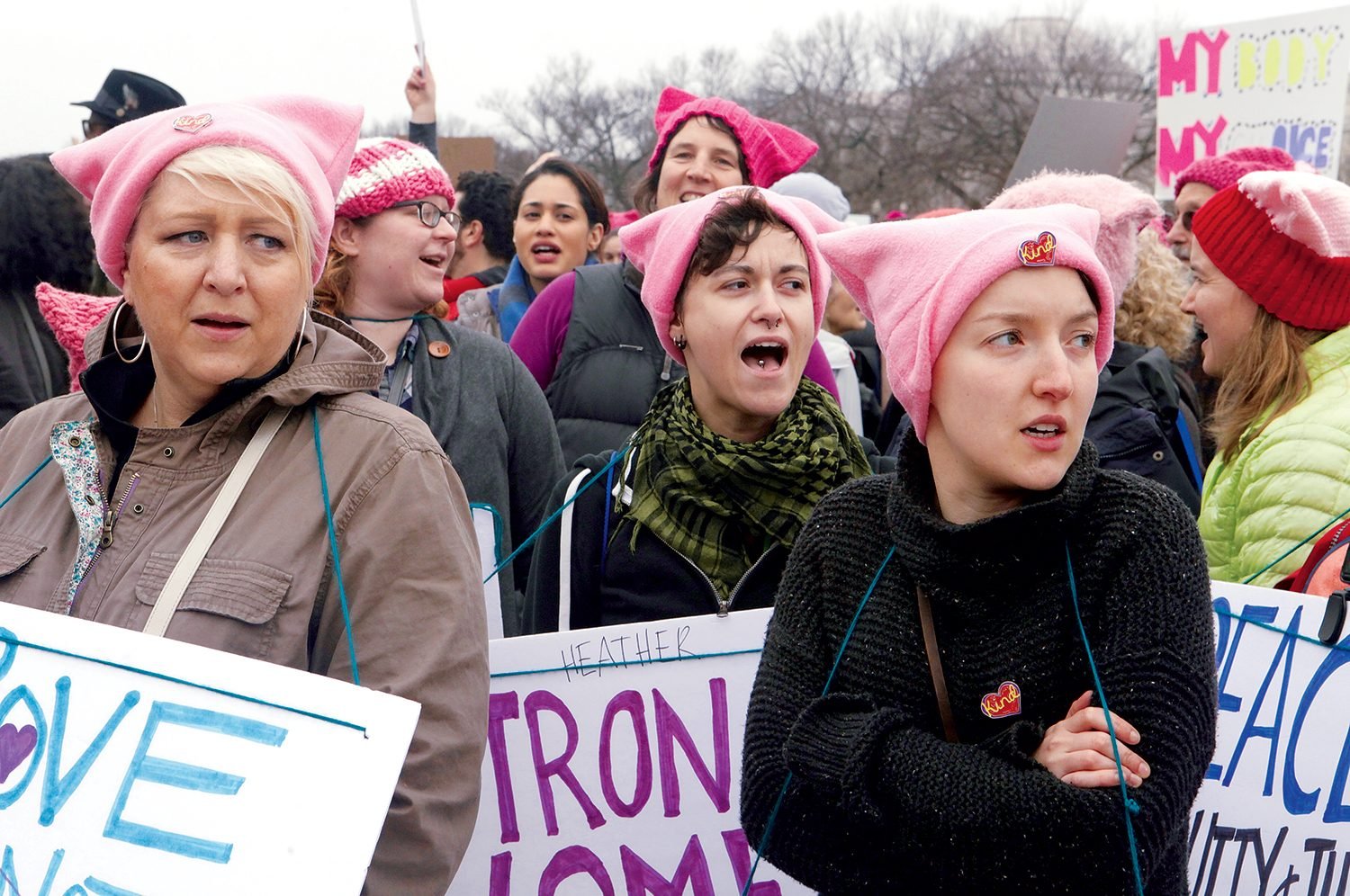Like many DC residents, the Women’s March on Washington is a transplant. With New York organizers rallying participants from around the country, the Washington contingent has been working around the clock to get the word out. Mercy Morganfield, one of the organizers for DC, has been leading local efforts to mobilize women and improve the march’s inclusiveness. Only a few days before this huge march, she sat down with Washingtonian to encourage everyone to join.
How did you get involved with the Women’s March?
I knew there was gonna be a Women’s March so I went on to the national page to learn more about it. And I noticed that they had, you know, they had Maryland and they had Virginia but they didn’t have DC. So I reached out to the national [organizers]. I’m very active in the community, so I wanted to mobilize women for it, particularly in my group, African American women, to say “Hey, are you guys gonna march?” Because, you know, I believe that racism and sexism and all your “-isms” run in packs. You can’t focus on “I’m an African American” and not focus on “I’m a woman.” It’s very important for women to pull together and empower one another, and I’m not sure we’re always programmed to do that. I looked at the march and initially I said, “I don’t want to protest anything.” To me, just protesting is not productive. You have to do more than that. So I contacted the national office to ask, “How could I be involved at either a national or regional level?” And it took them a while to work it out but I ended up going to one of the local meetings [to tell them] “Look, we need to pull all of the language off of the website that says anything about protesting Donald Trump.” Let’s make this bigger than this election. Let’s make it bigger than either candidate. Elections don’t always turn out like you want. But what they can do, is when things don’t turn out like you want it can catalyze you into doing something bigger and better. So I said let’s remove all the language, let’s stop talking about the ugly things someone might have said and let’s start talking about women pooling together to get women elected.
Can you tell me a bit about the Women’s March team in DC? How many organizers are there?
You have your leadership group which is about five [people] and you probably have a good 50-60 on different teams working like a well oiled machine. I have to tell you, DC is very, very organized. They’ve done very well, they’ve brought a lot of things to the attention of national [organizers] like security, to the fact that they’re gonna have people infiltrating the march pretending that they’re marchers. It’s very important that you guys know what our agenda is, and I can’t say it enough: THIS IS NOT A PROTEST MARCH. It’s a show of strength in numbers and unity, we’re very clear about what we want. We want women at the table shaping global and domestic policy and we want them at the table in the same number in which they are proportionate in society.
What have been the challenges the DC team has faced?
I think some of the trouble that the local women’s march [is] having is reaching Wards that they don’t frequent. So, one of [the] wonderful things in having diverse people in the room, in having me in the room [and] we have a couple women of color there–around the table is about 15 people. That’s not good, in Washington, DC–you throw a rock you hit a black person. You gotta be able to find ’em. One of the hard things is saying things like “You know, we really want to reach out to Ward 7 and Ward 8,” which is code for where black people live. So you need somebody like me in the room to say that’s code. “Well, we wanna get in their neighborhoods and show that we care about them.” Their neighborhoods? There are white people in Ward 7 and Ward 8 now, newsflash. So it’s not “their neighborhood.” Sometimes we use language and we don’t even know it’s divisive. Black people live in Ward 1, 2, 3, 4, 5. And Ward 6. We’re not just in Ward 7 and Ward 8. Well who do I reach out to and how do I go to the churches–you wouldn’t have to have this conversation at all if you had the right people at the table.
So what happened?
We put together a team. We have a lot of black women marching but I think what we have to be very careful about is the imagery that we send. It means something if you look at a Facebook page and every administrator on there is white. People don’t mean to be anything but inclusive and in their hearts I’ve met some of the most inclusive, very open minded, very intelligent women but you don’t know what you don’t know if you live in a bubble–and that goes for black or white.
How else do you support inclusion as a march organizer?
It’s very important that we practice conscious inclusion. We don’t need a movement that’s started by young white women and you bring black women in, you know, three months into it. We need a movement that starts from the beginning to have that type of inclusiveness. People don’t wanna think, ‘Yeesh, you’ve got these people at the top of the pecking order and they brought us in as warm bodies.’ No one likes to feel like that. So I’m kind of that voice of clarity because our women’s organizing group are young white millennials. Yes, they have women that they’re engaging but organizing is who calls the shots, or who decides what we do or who decides how we do it. That [organizer] table needs to be as colorful as the crayon box. It needs to be as expansive in age, from 16 to 106. And it needs to be expansive in gender. We should not make the assumption that the only people who want to empower women are women. You’ll know it philosophically but you’ll still behave the same way.
What’s next?
The march is bigger than a January 21st event. My expectation and what I have heard of what everyone says they would like to see happen–now let’s go back to the drawing board. After we’ve taken our stand, let’s look at how to get women at the table. That might mean that you need to change your processes and you might need to change your mission, and you might need to change a whole lot of things that the women you want to include weren’t there for. Let this march be the springboard for so many other things.



















